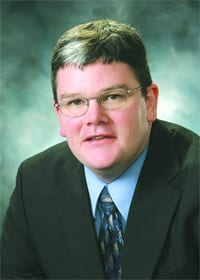STCC, GCC Now Offering Paramedic Training program
Starting this fall, emergency medical technicians throughout the Pioneer Valley will be able to take the training toward the Paramedic certification through an expanded program offered jointly by Greenfield Community College (GCC) and Springfield Technical Community College (STCC.)
GCC’s program in paramedic training, which is fully accredited by the Office of Emergency Medical Services, will be expanded to include a satellite program at STCC. Students in both locations will now have the opportunity of acquiring hands-on skills through the highly sophisticated patient simulation units in STCC’s virtual hospital.
“Opening a Springfield site for this paramedic training will be a great convenience for EMTs in this area,” said Michael Foss, Dean of the School of Health at STCC. “With the population density in this part of the Pioneer Valley, this local hosting of a satellite facility will be of great assistance to the medical community.”
Judi Singley, associate dean of Health Occupations at GCC, said, “By adding the patient simulation aspect to our already extensive paramedic curriculum at GCC, we’ll be providing a very high level of educational opportunities, with the best possible hands-on experience.”
All students in the 16-month paramedic program will register for classes at GCC, said Foss, but then will attend lectures at whichever institution is closer. “We will be able to accommodate 18 to 20 students at STCC.”
SIMS Medical Center — A Virtual Hospital @ STCC is probably the only facility of its kind in America, said Foss. “No one else that we know of can offer this level of patient simulation, populated by 12 computer-controlled units, and laid out in the pattern of an actual hospital. This allows our health students to work collaboratively in all kinds of medical scenarios, any of which can change without warning.”
For a paramedic, Foss said, this kind of training is invaluable. “The reason paramedics exist is to save your life. In any situation. Every time they respond to a call, they don’t know what medical conditions they’re going to see until they get there. EMTs and paramedics are truly first responders.”
The patient simulation units can breathe, talk (through a receiver linked to a microphone used by an instructor in another room), be injected, and have a heart beat; they’re controlled by computer to exhibit all kinds of medical conditions. “The simulator forces the students to develop critical thinking skills to manage the patient’s care, and with experience, develops their self-confidence,” said Foss.
GCC´s EMS program director Deborah Clapp noted, “This approach is supported by the commonwealth’s Office of Emergency Medical Services. They’re really excited about the whole process. They’re going to be watching our program to see what kind of changes come out of it, and how the students do, because this degree of simulation training is cutting edge. A lot of paramedic courses have one or two manikins, not patient simulations units. There’s no place around that has what STCC has to offer. This is the future of EMS education.”
“If this is successful, said Singley, “it’s defining a new kind of collaborative arrangement between the colleges. We hope it lays the groundwork for us to do future collaborations, and not only in health occupations.”



Comments are closed.